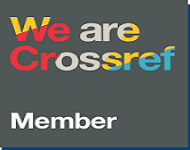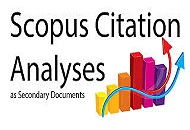Building Self-Efficacy in Intercultural Communication: A Narrative Study of an International Ph.D Student in The US
DOI:
https://doi.org/10.33394/jp.v12i4.16953Keywords:
self-efficacy, intercultural communication, narrative inquiryAbstract
This study aims to explore how self-efficacy in intercultural communication was constructed by an Indonesian Ph.D. student in the United States through academic and social experiences. A narrative inquiry design was employed to capture lived experiences and meaning-making processes in intercultural adaptation. Data were collected through in-depth interviews, self-recorded conversations, and researcher notes, with triangulation applied to ensure validity. Thematic analysis indicated that intercultural challenges, including communication barriers and cultural differences, were navigated through adaptive strategies, reflective practices, and support from academic and community networks. The findings suggest that self-efficacy is a dynamic process, strengthened through mastery experiences and social reinforcement. This study emphasizes the need for reflective learning opportunities and empathetic institutional support to enhance international students' intercultural competence.
References
Anggieta, S., Sumardi, S., & Setyaningsih, E. (2023). Unveiling Indonesian EFL teachers’ intercultural sensitivity: A narrative inquiry into language teaching material design. Al Ishlah: Jurnal Pendidikan, 15(3), 2790–2801. https://doi.org/10.35445/alishlah.v15i3.4261
Cambridge University Press & Assessment. (2022). An international education from Cambridge [PDF]. Cambridge International Education. https://www.cambridgeinternational.org/Images/417448-overview-brochure.pdf
Deardorff, D. K. (2006). Identification and assessment of intercultural competence as a student outcome of internationalization. Journal of Studies in International Education, 10(3), 241–266. https://doi.org/10.1177/1028315306287002
Farmer, H. R., Xu, H., & Dupre, M. E. (2020). Self efficacy. In D. Gu & M. E. Dupre (Eds.), Encyclopedia of gerontology and population aging. Springer. https://doi.org/10.1007/978-3-319-69892-2
Gao, G., & Gudykunst, W. B. (1990). Uncertainty, anxiety, and adaptation. International Journal of Intercultural Relations, 14(3), 301–317. https://doi.org/10.1016/0147-1767(90)90017-Q
Glass, C. R., & Westmont, C. M. (2014). Comparative effects of belongingness on the academic success and cross-cultural interactions of domestic and international students. International Journal of Intercultural Relations, 38, 106–119. https://doi.org/10.1016/j.ijintrel.2013.04.004
Grady, J. S., Her, M., Moreno, G., Perez, C., & Yelinek, J. (2019). Emotions in storybooks: A comparison of storybooks that represent ethnic and racial groups in the United States. Psychology of Popular Media Culture, 8(3), 207–217. https://doi.org/10.1037/ppm0000185
Jing, Y., & Zhang, J. (2019). The influence of short term overseas internship on English learners’ self efficacy and intercultural communication apprehension. English Language Teaching, 12(9), 6–12. https://doi.org/10.5539/elt.v12n9p6
Kabir, R. S., & Sponseller, A. C. (2020). Interacting with competence: A validation study of the self-efficacy in intercultural communication scale–short form. Frontiers in Psychology, 11, 2086. https://doi.org/10.3389/fpsyg.2020.02086
MacDonald, N. I. (2023). Intercultural communication in second-language (L2) learning via social media within the Inuit context: A scoping literature review. AlterNative, 19(4), 784–793. https://doi.org/10.1177/11771801231196147
Morita, N. (2004). Negotiating participation and identity in second language academic communities. TESOL Quarterly, 38(4), 573–603. https://doi.org/10.2307/3588281
Nguyen, T. (2022). Reflective learning and intercultural competence among international students.
Noel, T. K. (2020). Narrative inquiry: Examining the self-efficacy of content area teacher candidates. Journal of Teacher Education and Educators, 9(1), 23–60.
Nugraheni, T. R., Retnaningsih, D., Hartanto, M. D., & Khoirunnisa, A. (2024). The role of self-efficacy and competence in international student’s sociocultural adaptation. Indigenous: Jurnal Ilmiah Psikologi, 9(1), 1–13. https://doi.org/10.23917/indigenous.v9i1.4124
Peterson, J. C., Milstein, T., Chen, Y.-W., & Nakazawa, M. (2011). Self-efficacy in intercultural communication: The development and validation of a sojourners’ scale. Journal of International and Intercultural Communication, 4(4), 290–309. https://doi.org/10.1080/17513057.2011.602476
Rayyan, A., et al. (2023). Social support and intercultural adjustment of doctoral students abroad.
Saharani, A. A. (2023). EFL students’ intercultural awareness in multicultural classroom: A narrative inquiry. Indonesian Review of English Education, Linguistics, and Literature, 1(1), 12–25.
Tai, A. L.-H. (2019). Investigating intercultural communication competence in narrative texts of English learners (Doctoral dissertation, University of New England). DUNE. https://dune.une.edu/theses/195
Ten Thije, J. D. (2016). What is intercultural communication? In L. Jäger, W. Holly, P. Krapp, & S. Weber (Eds.), Sprache – Kultur – Kommunikation / Language – Culture – Communication: An international handbook of linguistics as cultural study (pp. 36–55). De Gruyter Mouton. https://doi.org/10.1017/9781108555067.004
Waddington, J. (2023). Self-efficacy. ELT Journal, 77(2), 237–240. https://doi.org/10.1093/elt/ccad007
Zhang, Y., & Zhou, G. (2020). Enhancing self efficacy in intercultural communication: A study of international students in Canada. Journal of International Students, 10(3), 756–775. Retrieved from https://ojed.org/index.php/jis/article/view/5593
Published
How to Cite
Issue
Section
Citation Check
License
Copyright (c) 2025 The Author(s)

This work is licensed under a Creative Commons Attribution-ShareAlike 4.0 International License.
License and Publishing Agreement
In submitting the manuscript to the journal, the authors certify that:
- They are authorized by their co-authors to enter into these arrangements.
- The work described has not been formally published before, except in the form of an abstract or as part of a published lecture, review, thesis, or overlay journal.
- That it is not under consideration for publication elsewhere,
- That its publication has been approved by all the author(s) and by the responsible authorities tacitly or explicitly of the institutes where the work has been carried out.
- They secure the right to reproduce any material that has already been published or copyrighted elsewhere.
- They agree to the following license and publishing agreement.
Copyright
Authors who publish with Jurnal Paedagogy agree to the following terms:
- Authors retain copyright and grant the journal right of first publication with the work simultaneously licensed under a Creative Commons Attribution License (CC BY-SA 4.0) that allows others to share the work with an acknowledgment of the work's authorship and initial publication in this journal.
- Authors are able to enter into separate, additional contractual arrangements for the non-exclusive distribution of the journal's published version of the work (e.g., post it to an institutional repository or publish it in a book), with an acknowledgment of its initial publication in this journal.
- Authors are permitted and encouraged to post their work online (e.g., in institutional repositories or on their website) prior to and during the submission process, as it can lead to productive exchanges, as well as earlier and greater citation of published work.
Licensing for Data Publication
-
Open Data Commons Attribution License, http://www.opendatacommons.org/licenses/by/1.0/ (default)






